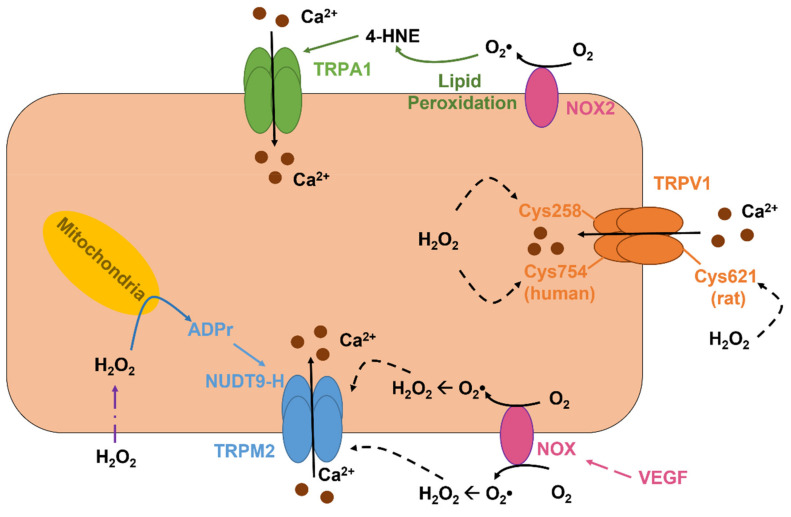Figure 3.
ROS activate endothelial TRPA1, TRPV1, and TRPM2. H2O2 may directly activate TRPV1, although the underlying mechanism may vary depending on the species and involves the cytosolic Cys258 and Cys274 and the extracellular Cys621 in the human and rat proteins, respectively (please see the text for further explanation). H2O2 may indirectly activate TRPM2 by inducing the mitochondrial production of ADPr, which binds to the COOH terminal NUDT9-H motif and gates the channel. VEGF-induced NOX2 activation may lead to TRPM2 activation upon intracellular ROS production. NOX2-derived O2•− may induce lipid membrane peroxidation and thereby promote 4-HNE formation through the Fenton reaction. 4-HNE, in turn, stimulates TRPA1 to mediate extracellular Ca2+ entry.

